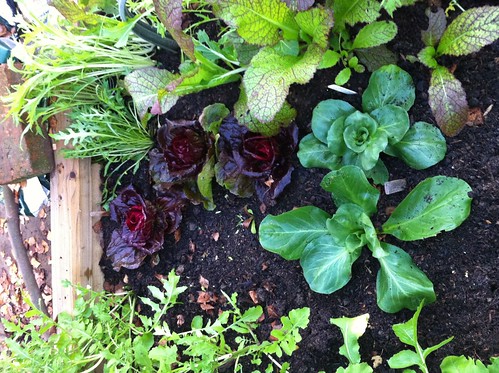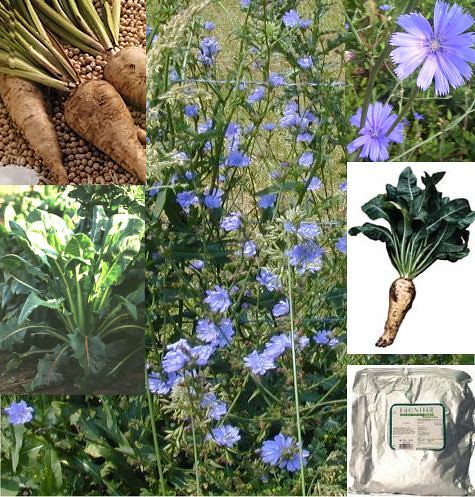Wildlife in Focus - Golden Whistler
This bird is one of Australia’s loudest and most beautiful songsters but scientists give it a most unkind name. There’s even one group on Norfolk Island that they call Tamey.
The call has been described as up to 35 loud, rapid, ringing notes without pause, or a high, thin call with a whip-crack.
Listen to this. I'm talking with ecologist Sue Stevens
As Sue mentioned, the Golden Whistler is found from Cooktown in North QLD to the Eyre Peninsular in the South, as well in Southern WA. This bird inhabits most kinds of dense forest, its diet consists of insects, grubs and small fruits
The Golden Whistler will visit suburban areas close to nature reserves if gardens include thick vegetation, layers of trees, shrubs and ground cover. Collecting firewood from local reserves is not a good idea if you want native birds to visit your area.
Keep your cat in at night and give it a stimulating indoor environment and a cat run or enclosure, to minimise the threat to birds.
If you have any questions about the Golden Whistler, or have spotted it in your neighbourhood, why not send in a photo or drop us a line. Or send in a photo to realworldgardener@gmail.com or by post to 2RRR P.O. Box 644 Gladesville NSW 1675, and I’ll send you a copy of the Garden Guardians in return..
Vegetable Heroes
This week’s Vegetable Hero is Peanuts! Arachis
hypogaea, or peanut is not a true nut but a legume, like peas, and beans.
Arachis
hypogaea, or peanut is not a true nut but a legume, like peas, and beans.Why peanuts? Because people tell me it’s easy, and fun thing to try.
Another announcer here at the station, bought a small plant from a low cost supermarket last year, planted it in a pot and harvested some peanuts.
He was amazed at how easy it was and wondered if it would continue to crop the following year.
I’ll answer that later.
Anthropologists working on the slopes of the Andes in Brazil and Peru have discovered the earliest-known evidence of peanut farming dating back an amazing 7600 years. Amazing!
Did you know that peanut growing was introduced into Australia in Queensland during the gold rushes of the 1870's.
Chinese gold diggers on the Palmer River near Cooktown, around this time were the first to grow peanuts.
The peanut plant grows to a bush about 50 cm tall and up to 100 cm wide.
Small, yellow, pea-type flowers emerge at 30-40 days after planting give or take a few weeks, and, after self-pollination, the ovary's base elongates, bends downwards and penetrates the soil.
The tip of this 'peg' then enlarges to form a pod containing one to three kernels.
Depending on what variety you managed to get, where you’re growing your peanuts and what the weather’s like that season, will determine how long your peanuts will take to grow.
Peanuts can take anywhere from from 14 to 26 weeks, or 3 ½ to 6 months.
Peanuts aren’t too fussy about the type of soil you’ve got.
However, Peanuts are a subtropical legume crop needing relatively warm growing conditions and 500 to 600 mm of rain.
As long as the soil is well-drained and friable with no large stones, sticks, stumps or chemical residues.
Peanuts can tolerate a wide range of pH - from 5 to 8, but can’t tolerate heavy clay soils.
When to Plant
Planting usually occurs from October to January in Queensland and NSW. In the Northern Territory, plantings occur in March-April.Peanuts have been commercially trialled in Western and South Australia, so give them a go there too.
For cooler zones, plant your peanuts in pots or containers and keep the going by placing them in the warmest part of the garden.
Where Can You Get It?
The seed that is.
To grow your own peanuts if you can’t find any peanut bushes to buy, it’s sort of easy.What you need is a packet or raw peanuts. Not salted or roasted or any other fancy shmancy types.
It has to be raw peanuts.
Then, like any other seed, you sow some raw peanuts either into jiffy pots, punnets or into a garden bed.
Sow each seed 3-5cm deep and if they are fresh they should germinate in one to two weeks).
There’s a few strange and weird things about looking after your peanut bushes though.
For instance, you might be surprised to know that the pods take most of their calcium and boron directly from the soil rather than through the roots.
Sprinkle some Dolomite, which contains Calcium, around the plant before flowering.
Next, watering is critical particularly during the critical stages of germination, flowering, pegging, and pod filling.
Yes, that's right, all the time the peanut is growing.
When Are They Ready?
The next trick is to know when to dig up the peanuts, and like a lot of things that grow in the veggie bed, it’s when the leaves start to turn brown. You can check to see if they’re ripe by digging a few up.What you need to see are dark-coloured pods inside the shell, where the kernel should be changing from a pink to gold colour.
Not all the pods will be ready at once so timing is important.
But look, if you get it wrong, that try again next year.
For Brian, the announcer at 2RRR 88.5fm, who experimented with growing peanuts, the answer to will the plant grow again next year.
No, because you have to dig up the whole plant, shake off the excess soil and hang the entire thing up in a warm, dry place, such as the garage or garden shed.
Dry the bush for a week or two until brittle then break off the pods.
Wash off any dirt-dirt isn’t too tasty- and air-dry for a couple of weeks.
If you like raw peanuts you don’t have to do any more.
If you like roasted peanuts, then put them on a tray in the oven at 160-180°C in an oven for 15-20 minutes for shelled kernels or 20-25 minutes for peanuts still in the shell.
Why is it good for you?
Peanuts are high in fibre and protein but free of cholesterol.
They’re a high energy food but with a slow energy release over a long time because of the high oil unsaturated (good) fat content.
They also have a high folic acid (iron) content
Living Planet
with Sophie GoldingIt’s great to have all kinds of creatures visit your garden. You put out those bits of white bread for the maggies, or those seed bells for the cockatoos.
What’s wrong with that?
Animals that expect to be fed by people can become aggressive, harassing people for food when they are hungry.
The Ibis at the Botanic gardens where I teach visiting schools, are an example.
I’m often asked by visiting students why the Ibis seem to harass them.
Whatever your thoughts,
Listen to this….
The NSW department of Environment and Heritage suggests that when you feed native animals you're giving them the wildlife equivalent of junk food.
When kangaroos and wallabies become used to being hand-fed, they sometimes attack people in their quest for food. Remember, they have sharp claws and a strong kick.
Another example is in Flinders Chase on Kangaroo Island where they’ve had to put up cages around the eating tables in the national park, so people can eat in peace.
If you have any questions about this Feeding Wildlife, send it our email address, or just post it.
Plant of the Week
Alliums
You
might think that Alliums are in the Alliaceae family.
They
were but have been reclassified into the family Amaryllidaceae.Chives have pretty cute pom pom purple flowers that make a nice low border in the garden. Although many of the plants in the onion family have flowers with that distinctive onion or garlic scent, many others are have a delicate floral aroma.
 Did you know that these floral scented Alliums are often used in perfumes and cosmetics?
Did you know that these floral scented Alliums are often used in perfumes and cosmetics?But there are also other members of the onion family that have quite a wow factor when it comes to their flowers.
Like a lot of bulbs, Alliums don’t repeat flower.
What’s good about ornamental alliums is that the flower heads can be left on the plant to dry.
The dried seed heads look attractive in the garden and can be used for cut flower arrangements.
If you’ve got dry weather, keep the foliage watered even after flowering, to feed the plant.
Alliums
with their purple pom pom flowers really provided a vertical and linear element,
amongst the flower borders.
Sometimes
the flowers are described as fireworks in mid-explosion.
The
purple and the green, although not opposites in the colour wheel, were
definitely a standout amongst the crowd.
Really
a must have plant in a perennial border because you can enjoy flowers from
spring until autumn.
By
mid-spring, packed, rounded heads of violet-purple stand on strong stems that
reach up to 90cm high. The leaves are bright green and the flowers, which kind of remind me of Agapanthus flowers in size and shape, soft to the touch, with lots of petals.
The important point is that they need a well-drained site.
They don’t like cold, exposed or waterlogged conditions.
Being bulbs, they'll come up every year without you having to do another thing. Brilliant!
Plant
bulbs in the autumn, to twice the depth of the bulb.
Most
Alliums will do well in deep pots.Congested clumps can be lifted and divided - straight after flowering, if necessary.
Dead-head before the seeds disperse if you want to avoid seedlings.
Alliums go well with soft pastels, among old-fashioned roses, among a Mediterranean mix of lavender, artemisia, sage and phlomis.
Purple Sensation'. will tolerate more shade
Allium ‘Millenium’
Allium giganteum like its name suggests, is bit of a giant, though slightly later to flower.
It reaches 1.2m (4ft) tall and each large 15cm (6in), spherical head is lilac-purple
Both A. cristophii and A. schubertii can be grown on heavier soil in full sun, but will only successfully overwinter and multiply if given good drainage.
This
is the first Australian release of the very best perennial Allium. It forms a
compact upright clump of glossy green, narrow strap-like leaves. From
mid-summer into autumn 35cm tall stems carry a profusion of large bright
purple-rose balls of flowers. Foliage mounds grow 30cm tall by 30cm wide.
Allium sphaerocephalon-Drumstick
Allium
From January, metre tall stems are
topped by green golf balls which over a period of a week or so gradually turn
purple. Increases readily. Sun. 100cm x 10cm.
Allium roseum, A. sphaerocephalon and A. vineale produce aerial bulbils in flower head.
Carefully remove and separate the bulbils and plant them in moist free draining compost about 2.5cm (1in) apart and cover with 1cm (3/8in) layer of compost.
Carefully remove and separate the bulbils and plant them in moist free draining compost about 2.5cm (1in) apart and cover with 1cm (3/8in) layer of compost.
Allium christophii -35x
30cm
One
of the most beautiful large headed Alliums with huge 20cm mauve heads on short
squat stems. Better than many of the modern breeds, with fewer disease issues
and good garden persistence in a well drained position.
From Diggers Seeds www.diggers.com
Why not treat yourself to a big flowered one? Go on.













